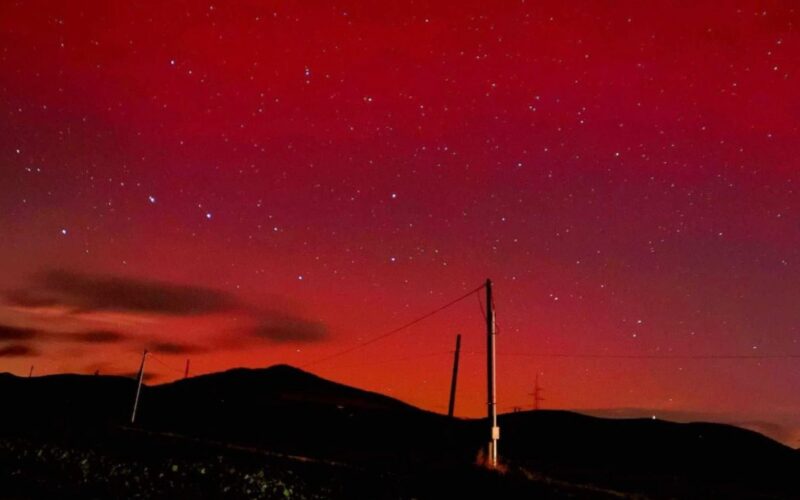<p>November 13, 2023 – In a rare celestial spectacle, the Hanle and Merak observatories in Ladakh recently captured an unusual red aurora, a phenomenon seldom seen in Indian skies. Known for their ability to observe the night sky clearly, these observatories recorded the luminous patterns resulting from solar particles interacting with Earth&#8217;s magnetic field. While auroras are typically observed closer to the poles, this extraordinary event added a captivating chapter to India&#8217;s astronomical records.</p>



<p>The northern horizon at the Hanle observatory revealed the breathtaking red lights, while the Merak camera, stationed along the banks of Pangong Tso, faced challenges due to towering mountains obstructing the view. This event marked the second aurora occurrence recorded by the Hanle observatory in 2023, with the previous sighting on April 23.</p>



<h2 class="wp-block-heading">Understanding the Aurora Phenomenon</h2>



<p>Auroras are a result of the interaction between plasma released during solar flares and Earth&#8217;s magnetic field. Typically occurring near the poles, where the plasma enters, these luminous displays are less visible in equatorial regions like India. However, scientists anticipate an upswing in aurora events over the next two years due to fluctuations in solar flares during the 11-year cycle. The ongoing ascending phase suggests more solar flares in the coming year, with the peak expected in 2025.</p>



<h2 class="wp-block-heading">The Unique Position of Hanle Observatory</h2>



<p>As India&#8217;s only dark sky reserve, Hanle provides an ideal vantage point for observing such celestial phenomena. The recent red auroral activity is linked to a Coronal Mass Ejection (CME) from the Sun&#8217;s outer layer, which occurred two days before the observatories recorded the event. NASA&#8217;s data validates the Sun&#8217;s eruption at 10:15 am (IST) on November 3, adding to the intrigue of this rare celestial display in the Indian night sky.</p>

